#warring states
Text
i literally spend at least 2 hours a week just looking at various pictures of the terracotta army. utterly entranced. look at the details in the hair. you'd never see ANY of this when they're lined up in formation, but they're there.
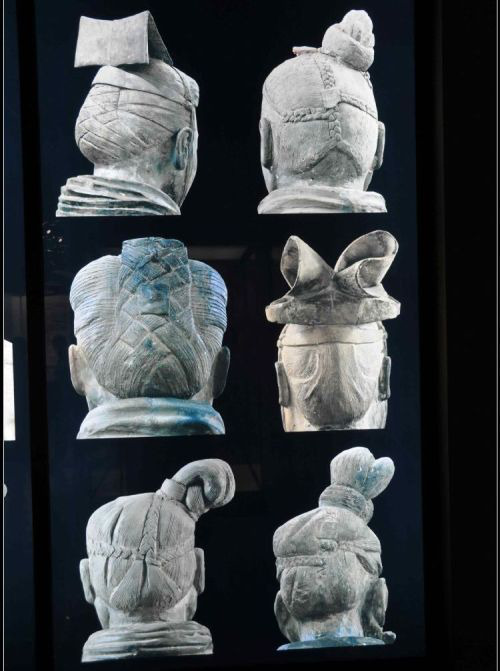
theres about 8000 of these guys down there, no two faces are alike. they're works of art. they're the manifestation of a cruel despot's delusions of grandeur. a talisman against the terrible inevitability of death, both pathetic and strangely pitiful. like watching a child clinging to his blanket, begging you not to turn off the light. they were a bunch of insignificant clay statues from a side chamber that was so small and unremarkable, no one bothered to write down the location. they were modelled after real people. their only purpose was to serve qin shi huang in the afterlife, so he could reign in heaven as he did on earth. now the emperor is just a ghost and his pawns are immortal. my dad and i visited them in the dead of winter, on a weekday, just so we wouldn't have to deal with tourists like us. the place had easily 500 people--not including the ones below ground. we traveled to xian via the old "green skin" diesel train. there are faster means, like highspeed rail but dad insisted i try the authentic way, the same way he would have traveled when he was my age it was also like, a quarter of the price but im sure that had nothing to do with it! back in the 80s carriages would get so packed people had to have their luggage passed in via the windows. as we chugged along, i read my book and my dad made us cup noodles. car is just a shortened version of "carriage", the word is the same but the mechanism is different. it's the same in chinese. i think if i told someone from the warring states period i could travel from the Kingdom of Qi to Qin in just four hours with my metal carriage, i'd be laughed out of town--or accused of being a spy and sentenced to 'death by carriage.' we hopped off the train at 4am and took a different "carriage." the taxi driver joked; "basically every dynasty put their capital in xian, stick a shovel anywhere and you'll turn up some national treasure or another." i wonder what it would have felt like to be a farmer digging a well and then out pops a remarkably realistic human head. statistical analysis show the soldier's faces bear a strong similarity to people living in the region today. the taxi stopped in front of a jewellery-hawking tourist trap and refused budge an inch until we went inside. did you know the terracotta soldiers were originally multi-coloured and painfully gaudy, just like the greek marbles? they were made assembly-line style. the arms and legs were made from the same workshops that made clay plumbing pipes and roof tiles. for quality control, the artisans were required to stamp their names. the workers who built these tombs were executed shortly afterwards, because only dead men can be trusted with secrets. qin shi huang's mausoleum is unlikely to be excavated in my father's lifetime, or mine, not unless i'm willing to take a BIG ONE for the team... instead of the tomb, they built some kind of qin shi huang-themed theme park next to it. not only was it tacky as hell the entrance fee was like $50. we went to the museum and i looked at bronze tools and pottery shards for three hours. look why can't we just crack the thing open i can't be the only one here whos dying from curiosity what if we all just took turns digging
#qin shi huangs terracotta army#warring states#qin dynasty#thinking about Her...<3 bronze tools and pottery shards <3#my writing
1K notes
·
View notes
Photo
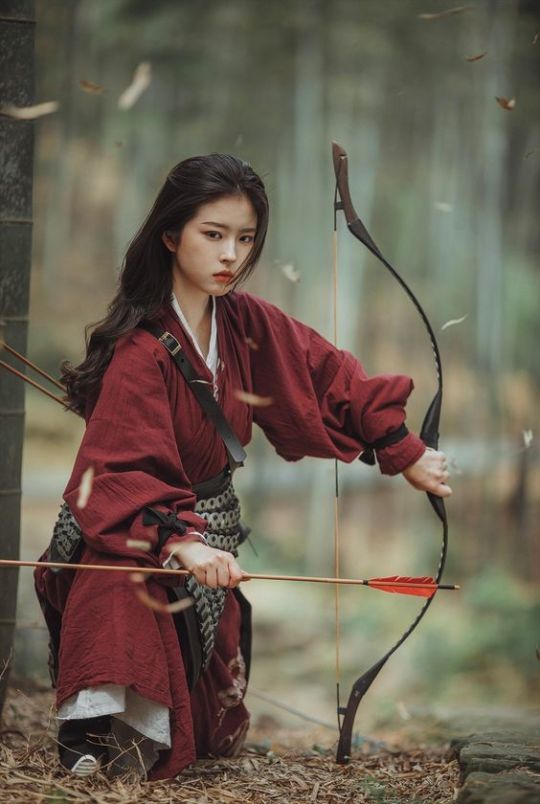
百步穿杨
- Yang Youji
Shoot an arrow through a willow leaf a hundred steps away.
This chengyu describes an excellent marksman, equivalent to calling them a “deadeye.” Records suggest that during the Warring States period (475-221 BCE), a man named Yang Youji was challenged by King Zhuang of Chu to shoot a dragonfly without killing it, which he managed by shooting an arrow through its left wing. Yang, it was said, could shoot a willow leaf from a hundred paces away without fail. Yang became famous for his martial arts skills, and this chengyu was born.
#youji#yang youji#quote#chinese#bow and arrow#archery#femme#warring states#ancient china#martial arts#marksmanship
338 notes
·
View notes
Text
A 2,200-2,500-year-old cemetery just discovered in China has yielded hundreds of artifacts including a small arsenal of splendidly preserved Bronze weapons that look like they have barely been used. They date to the tumultuous Warring States period, when various warlords vied for power in the region, with overall victory going to Ying Zheng, the King of Qin, unifying China for the first time.
18 notes
·
View notes
Text

There was a a letter from Nobukatsu addressed to Ieyasu that made news last April, but I didn't catch this news then. Thankfully the article is archived in a lot of places (many news sites these days paywall old articles, or delete them altogether).
The letter is dated the Tenth Month of Tenshou 13 (November 1585), and it mentioned how Ieyasu had sent his vassal Ishikawa Kazumasa to Hideyoshi to negotiate. The rest was interpreted to be Nobukatsu trying to persuade Ieyasu to stand down and not try to raise arms against Hideyoshi, assuring Ieyasu that Hideyoshi will regard Ieyasu's concerns carefully in the proceedings.
At this point Hideyoshi is already the Kanpaku, having received the title and rank in the seventh month of the same year.
The news report also narrates that history recorded Ieyasu still persisting in trying to fight Hideyoshi, despite this mediation. Ieyasu only ceased his plans and agreed to surrender because a massive earthquake hit in the 11th month of the same year, causing large-scale devastation in multiple provinces.
Many castles collapsed because of the earthquake, and there's further complications because of landslides, tsunami, and fires that occurred in the aftermath. With all the domain lords likely tied up trying to do damage control in their territories, there's no way to start a war at this time.
Nobukatsu visited Ieyasu in the first month of the next year (February 1586), and Ieyasu expressed his intention to agree to surrender then.
#oda nobukatsu#artifact#letter#tokugawa ieyasu#japanese history#samurai#sengoku#sengoku jidai#sengoku era#sengoku period#warring states era#warring states period#warring states#toyotomi hideyoshi#hashiba hideyoshi
36 notes
·
View notes
Text
Ancient Chinese Surnames: Privilege of Nobility and Ritual Feature
Ancient Chinese Surnames: Privilege of Nobility and Ritual Feature
The practice of regulation through the awarding of titles points to another feature of Warring States administration derived from earlier ritual practices: the granting of family names. While still subject to debate on many points, our current understanding of Shang and Zhou naming practices suggests that the patronym (xing) had not existed under the Shang, but had first appeared under the Zhou…
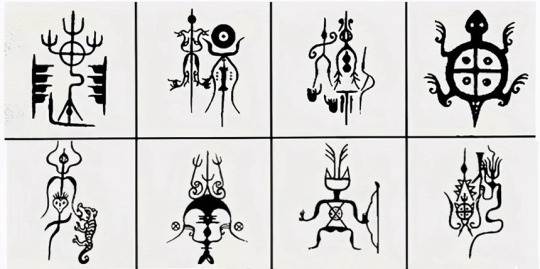
View On WordPress
#ancient China#anthropology#Chinese culture#Chinese history#Chinese surnames#old China#Shang dynasty#Taoism#traditional society#Warring States#Zhou dynasty#姓
194 notes
·
View notes
Text
Poll/Question for the Faction Paradox fandom, since the Book of the War says one thing, but then Warring States said another. I was waiting through to the end of Warring States to see if the retcon would be mentioned, but it was not resolved or even seemed to notice the discrepancy.
#polls#tumblr polls#doctor who#faction paradox#Cousin Octavia#Warring States#The Book of the war#faction paradox spoilers#possibly#I'm voting romance and the healers edited her memeories without her knowing
3 notes
·
View notes
Text
Yasuke
Book review:
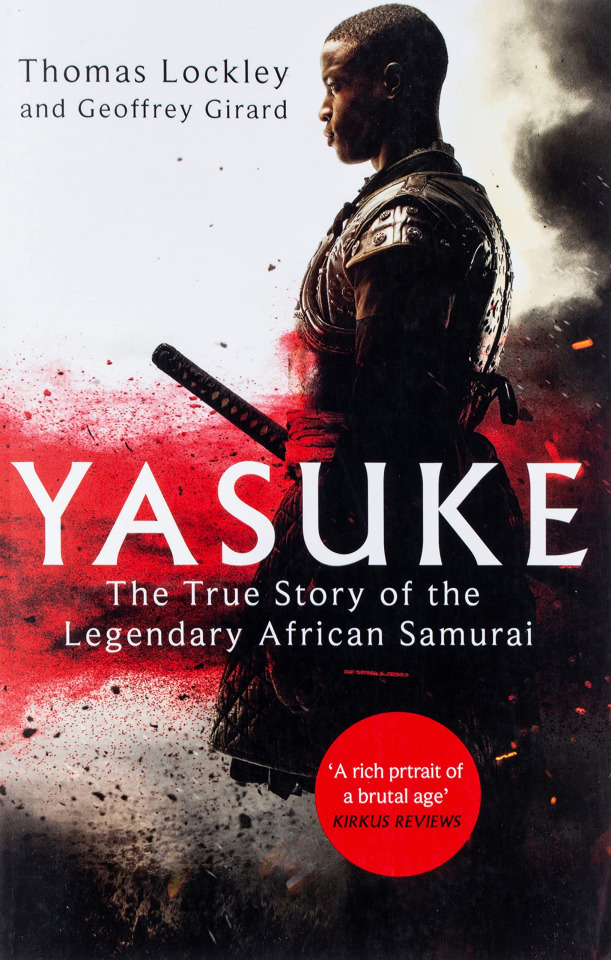
It's 1579 and the end of Japan's warring age appears imminent. Few warlords remain who have not been crushed or enthralled by the might of Oda Nobunaga, the great unifier. Making inroads are firearms, European fashion and Christianity. Into this world steps Yasuke, a towering, dark skinned African bodyguard who ascends to Nobunaga's inner circle. More than a biography, this is a detailed account of martial, upper-echelon, pre Edo Japan.
Taking place amidst some of the most exciting and violent years of Japanese history, this is a riveting textbook camouflaged as a biography. Yasuke was an intriguing oddity. A singular black African soldier, he arrived at a time when Europeans were rare and himself nearly unique. He rises to become a confidant of the most powerful warlord the country had seen and officially gains elevation to samurai, complete with stipend and household. He's also a linguistic genius going from fresh off the boat, barely heard of Japan, and within a year he is conversing with the defacto head of state, not only without embarrassing himself but well enough that Nobunaga would specifically sought him out for discourse.
Yasuke's story is the backbone to two other major elements that contribute to the bulk of the 400 pages of content. Digressions are frequent and sometimes expansive. These cover relevant character backstories, the state of the world, the Jesuit order, scientific advances, ocean travel, regional history, local history, cultural notes and other circumstantial information. The other major element is Oda Nobunaga. His looming presence and monumental impact mean that Yasuke is sometimes an excuse for a massive infodumping of Nobunaga's manoeuvrings, political intrigues, regional factions, personal histories and warfare. This last point is not to be taken lightly. Another review goes as far as saying that "blood and gore ooze from the pages". Perhaps an exaggeration but it does viscerally convey the martial activity prevalent to Yasuke's world.
Yasuke is the work of Thomas Lockley of Nihon University College of Law, Tokyo, in collaboration with Geoffrey Girard. Described by some sources as a debut novel, it certainly feels as if great care and attention have been lavished into its details. It was first published in 2019 as African Samurai. Arguably a much better and very literal title but perhaps confusable with the separate cult fiction property, Afro Samurai. The latter being an action slasher in a generic Edo-ish setting with light cyber and supernatural genre blending. More recently, an older, fictionalised Yasuke stars in a Netflix OVA adaptation, again featuring an altered history and very anachronistic Edo.
Shelf: 210.48 YAS
Yasuke : the true story of the legendary African samurai.
by Thomas Lockley and Geoffrey Girard.
Paperback edition.
London : Sphere, 2020.
ISBN: 9780751571592 (paperback)
472 pages : illustrations, map ; 20 cm.
First published in Canada?, 2019 as African Samurai by Hanover Square Press.
Includes bibliographical references and index (pages [457]-472).
#review#jcentral#non-fiction#history#biography#sengoku jidai#sengoku period#oda nobunaga#warring states#samurai#warfare#religion#christianity#jesuits#review 2023 04#new 2023 04
2 notes
·
View notes
Text
Qin Shi Huang did a lot to make China what it is today, but what truly makes him great is that he united the world because his soldiers wore pants
3 notes
·
View notes
Text

Palestinian activists get their message across on Londons iconic Tower Bridge landmark- one of the cities most historic buildings. We need a ceasefire now.
#london#palestine#free palestine#israel#gaza#free gaza#فلسطين#jerusalem#i stand with palestine#israel is a terrorist state#israeli war crimes
55K notes
·
View notes
Text
Help Hamza get his family out of gaza.
#free palestine#free palestine 🇵🇸#palestine#i stand with palestine 🇵🇸#israel is a genocidal state#israel is committing genocide#palestine will be free#free gaza 🇵🇸#israel is a terrorist state#gaza genocide#rafah#jews for palestine#palestine news#news on gaza#gazaunderfire#stand with gaza#war on gaza#free gaza#gaza strip#gaza#gazaunderattack#save gaza#israelis are terrorists#israel is a war criminal#israel is an apartheid state#israel is evil#fuck israel#boycott israel#israhell#tel aviv
34K notes
·
View notes
Text

#palestine#free palestine#gaza#free gaza#fuck israel#israel crimes#israel war crimes#israel is a terrorist state#israel#ceasefire now#end the genocide
22K notes
·
View notes
Text

i can’t believe this is happening… i’ve been thinking of the al-shifa siege for the past five six days and it has literally made me sick. when will this end?
#free gaza#free palestine#gaza#gaza genocide#i stand with palestine#israel is a terrorist state#israel is a war criminal#israhell#save gaza#stand with gaza
17K notes
·
View notes
Text

The painting held by the protesters is "Guernica" by Pablo Picasso. It was painted in response to an event during the Spanish Civil War in 1937 where the small Basque town was bombed extensively by Nazi German and Italian forces. 1,645 people were killed and a further 889 were injured. The town was defenseless and held no military gain or strategic value to either opposing forces.
A thousand died defenceless at the hands of an unnecessary military raid. This is a war crime condemned by thousands across the globe.
Tens of thousands more are dying today in Palestine due to Israeli "defences", yet the Western world refuses to condemn them for the same war crime, and dozens more at a much more severe rate.
Guernica communicates the same message today as an anti-war painting, however it is not a conflict if one side has the weapons and the other has their prayers.
Israel is not and never will be the victim.
Israel is an Apartheid Terrorist state.
A four day ceasefire will never be enough if Palestinians are given freedom only to be carpet bombed and buried again. They are grouping the masses to wipe them out more efficiently.
It does not stop at a ceasefire. Palestine must be liberated.
#gaza#palestine#free gaza#free palestine#israel is a terrorist state#israel is an apartheid state#gaza genocide#from the river to the sea palestine will be free#israel is a war criminal
25K notes
·
View notes
Text
Rotating volley technique possibly exist in Sengoku Japan
Previously in my Nagashino post, I mentioned that the popular story of the rotating volley tactic is considered dubious. The main reason for it is that the source of it is completely unknown. At some point it became a just-so story in the Edo era, and was affirmed as fact by the Meiji government, clearly without properly checking its veracity.
Even Oze Hoan’s Shinchouki text (this is not Ota Gyuuichi’s Shinchoukouki), which is already considered dubious in the first place, only recorded that the Oda forces had 3000 guns. It also did not describe a rotating volley tactic.
However, even if this artillery tactic is not explicitly used in the Nagashino battle, there is proof that the Japanese troops are aware of and seemingly well-trained trained in this tactic at least as of the late Sengoku. It was known to have been used in Hideyoshi’s Korean war, as recounted by the people of Ming and Joseon:
In 1593, for example, Ming General Song Yingchang (宋應唱, 1536-1606) noted that the Japanese employed the musketry volley technique, writing that he feared the Japanese would “break into squads and shoot alternately against us (分番休迭之法).” In 1595, Korean King Sŏnjo shared the same apprehension that “the Japanese [would] divide themselves into three groups and shoot alternately by moving forward and backward (若分三運, 次次放砲)?”
From "Big Heads, Bird Guns and Gunpowder Bellicosity: Revolutionizing the Chosŏn Military in Seventeenth Century Korea", a thesis by Kang Hyeok Hweon.
Maybe there were records of this method employed in domestic battle that the researchers just haven’t discovered yet. For now it’s still unclear where and when the Japanese troops learned of this. Just that they seem well trained enough in it during the battles mentioned above.
It’s noteworthy, however, that this rotating volley tactic was already a very well-known method of warfare in China as early as 750s AD in the Tang dynasty. First, it was used by archery and crossbow units. Then, they evolved the technique to be used with guns. Below is a description of a battle in the year 1414:
“The commander-in-chief (都督) Zhu Chong led Lü Guang and others directly to the fore, where they assaulted the enemy by firing firearms and guns continuously and in succession. Countless enemies were killed.”
From “The Gunpowder Age: China, Military Innovation, and the Rise of the West in World” by Tonio Andrade.
Especially noteworthy is that the enemy’s army described in this passage are also mounted troops. It’s not impossible that the Japanese somehow learned of the above literature from Ming, and then put it in practice, though without proof we cannot assume too much.
King Seonjo’s description, specifically, sounds like the kind of rotating volley usually described in the Nagashino stories. This brings to mind how many times I’ve seen cases of Edo period stories inserting anachronistic objects or settings into narratives of the past, so it could be how this legend was born. Perhaps the Edo storytellers took the volley technique that wasn’t known or used until later, and just assigned it to Nagashino for dramatic flair.
#artillery#Firearms#resource#research#japanese history#imjin war#bunroku keicho war#samurai#sengoku#Sengoku Era#Sengoku period#Warring states#Warring States Period#Warring States Era
23 notes
·
View notes
Text
Hu Fu, Tiger Tally, User Authentication Tool in Ancient China
Hu Fu, Tiger Tally, User Authentication Tool in Ancient China
Tiger tally, Hu Fu or Bing Fu, is a time-tested user authentication tool in ancient China. This antique gadget represented a carved zoomorphic figure split in two halves that had to be matched. Inside the halves, a pattern or password inscription was cut out, so that the parts were complemented by each other. The shapes of the Tiger tallies varied and did not always correspond to the name,…
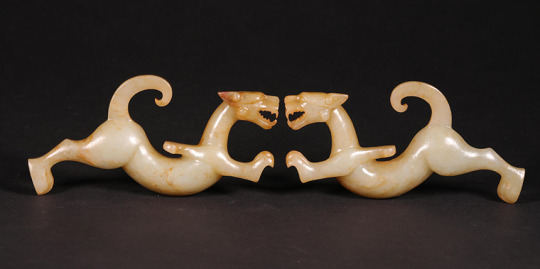
View On WordPress
#ancient China#Asian art#Chinese art#Chinese history#Chinese miniatures#Chinese warfare#虎符#Han dynasty#hu fu#tiger tally#Warring States#Zhou dynasty
70 notes
·
View notes
Text

WTF ARE THE CRIMES OF THESE PALESTINIAN MEN THEY CAPTURED, TORTURED, AND HUMILIATED FROM KHAN YOUNIS? BEING PALESTINIAN? IS THAT THEIR CRIME??
This was on a NATIONAL broadcast. A NATIONAL broadcast... these innocent men were trying to flee to find safety... there are just too many words to describe the inhumanity and morally depravity involved in being able to do something like this -the IOF are the real terrorists.
#feminist#social justice#free palestine#palestine#free gaza#freepalastine🇵🇸#settler violence#current events#settler colonialism#khan younis#israel is a terrorist state#israel is committing genocide#war crimes#end the genocide#end the occupation#ceasefire now#war on gaza#gaza news#gaza#gaza genocide#gaza strip
15K notes
·
View notes